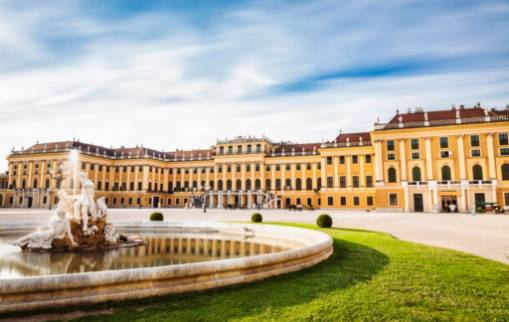The Secession Building in Vienna stands as a monumental icon of the Art Nouveau movement, showcasing exquisite architectural features and housing Gustav Klimt's renowned Beethoven Frieze. Its influence on the art world is undeniable, as it continues to inspire artists and visitors alike. Explore the history and significance of this historic landmark, along with its current exhibitions and events that keep its legacy alive.

Architectural Features of the Secession Building
The Secession Building, located in Vienna, Austria, is a stunning example of Art Nouveau architecture. Designed by architect Joseph Maria Olbrich, the building features a unique blend of ornamental and geometric motifs, as well as a focus on natural elements such as flowers and vines. The exterior of the building is characterized by its domed roof, intricate gold leaf ornamentation, and geometrically patterned facade. The interior of the Secession Building is just as impressive, with a grand entrance hall adorned with intricate frescoes and lavish decorative details. The building's overall design reflects the Art Nouveau movement's emphasis on fluid lines, organic forms, and decorative excess.
Gustav Klimt's Beethoven Frieze at the Secession Building
The frieze, created by Klimt in 1902, was originally designed as a temporary installation for the 14th exhibition of the Secessionist movement in Vienna. However, its popularity and significance led to its preservation and permanent display at the Secession Building.
The Beethoven Frieze is a monumental work of art that spans three walls of the Secession Building's main exhibition hall. It is a visual representation of Richard Wagner's interpretation of Beethoven's Ninth Symphony, expressing themes of humanity's longing for happiness, triumph over suffering, and the power of art to transcend the limitations of the material world.
Klimt's use of gold leaf and elaborate ornamentation in the Beethoven Frieze reflects the influence of Byzantine and Japanese art on his style, while also embracing the organic forms and symbolic motifs of the Art Nouveau movement. The frieze is a testament to Klimt's innovative approach to art and his commitment to creating works that provoke introspection and emotional response in viewers.
The Beethoven Frieze at the Secession Building continues to be a significant attraction for art enthusiasts and tourists visiting Vienna. Its profound beauty and thematic depth make it a must-see masterpiece for anyone interested in the rich history and artistic legacy of the Secessionist movement in Austria.
Influence of the Secession Building on Art Nouveau Movement
The Secession Building in Vienna, designed by architect Joseph Maria Olbrich, played a significant role in shaping the Art Nouveau movement. The building's unique architectural features, such as its golden dome and intricate ornamentation, inspired artists and architects across Europe to embrace the new style. The Secession Building became a symbol of the Art Nouveau movement, with its blend of organic forms and decorative motifs influencing the design of furniture, jewelry, and graphic arts. The building's ultimate goal of breaking away from traditional artistic norms and embracing a more modern and innovative approach had a lasting impact on the development of Art Nouveau as a whole.
Current Exhibitions and Events at the Secession Building
The Secession Building in Vienna is not only a historical landmark but also a hub for contemporary art and culture. The current exhibitions and events at the Secession Building showcase a diverse range of artists and artistic styles, providing visitors with a unique and immersive experience. Whether you are interested in traditional or cutting-edge art, there is something for everyone at the Secession Building. Be sure to check out the latest exhibitions and events to fully appreciate the rich artistic heritage of this iconic building.